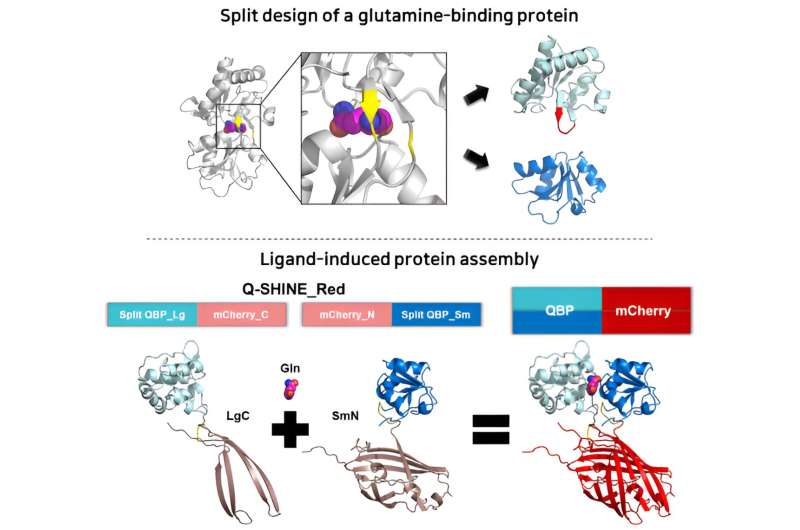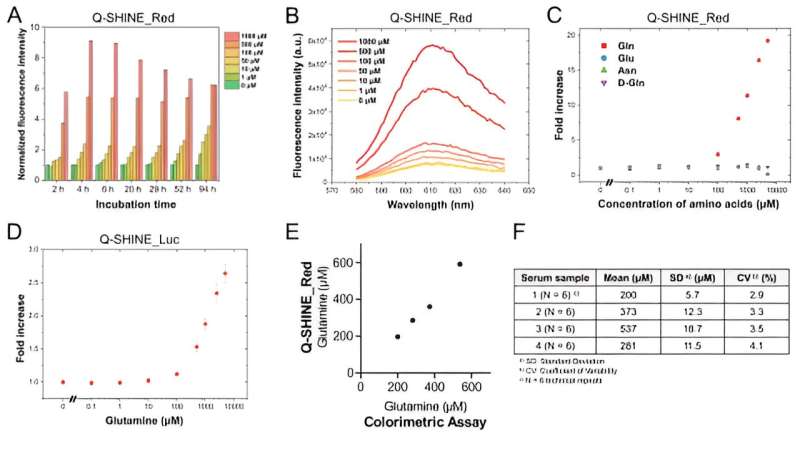This article has been reviewed according to Science X's editorial process and policies. Editors have highlighted the following attributes while ensuring the content's credibility:
fact-checked
trusted source
proofread
Diagnosing serious geriatric diseases with glutamine sensor

In 2023, life expectancy in Korea will be 83.6 years, the third highest among OECD countries, and it is steadily increasing every year. As the proportion of the elderly population increases, the social cost of treating various geriatric diseases is also increasing rapidly, and there is a growing interest in early diagnosis of diseases.
Among the various diagnostic methods, researchers are actively conducting research on measuring glutamine as an indicator of geriatric diseases by finding that the concentration of glutamine in the cells and blood of patients with serious diseases such as cancer, diabetes, and dementia is significantly changed compared to normal people.
Dr. Seo, Moon-Hyeong of the Natural Product Research Center at the Korea Institute of Science and Technology (KIST), together with Dr. Park, Keunwan of the Natural Product Informatics Research Center, have developed a technology that can quickly and accurately measure glutamine concentrations without complicated measurement processes and expensive analytical equipment through the principle of "ligand-induced protein assembly." The research was published in the journal Sensors and Actuators.
Glutamine is an amino acid in the blood that is used by cells to synthesize proteins or as an energy source, and its rapid fluctuation in certain situations makes it a useful biomarker for the treatment and early diagnosis of disease. For this reason, researchers are actively studying glutamine metabolism in the body to diagnose metabolic and degenerative diseases, including cancer treatment by inhibiting the metabolism of glutamine, which is also a nutrient for cancer cells.
Until now, the measurement of glutamine concentration in the body has relied on expensive specialized analytical equipment such as amino acid analyzers, which cannot measure changes in glutamine concentration in living cells in real time. In the case of relatively low-cost research kits, cumbersome pre-treatment processes such as protein removal in biological samples were required, resulting in long measurement times and low accuracy.
The team developed a sensor protein for measuring glutamine based on the principle of "ligand-induced protein assembly" that can easily measure the concentration of glutamine in the blood. By separating a glutamine binding protein into two artificial proteins and then binding to the sample, and named it Q-SHINE by combining Q, the symbol for glutamine, and SHINE, which means brightly glowing.
Experiments showed that the Q-SHINE sensor was highly selective, not responding to amino acids with similar structure such as glutamic acid and D-glutamine. The lowest concentration of glutamine that can be measured is 1 micromolar (µM, one millionth of a molar), which is 20 times lower than the enzymatic assay most commonly used in research kits. In addition, the sensor protein can be easily produced in E. coli, making it possible for a research kit to analyze glutamine concentrations at the same level as analytical instruments worth hundreds of millions of dollars.

The team also used the Q-SHINE sensor to monitor changes in glutamine concentration in the cytoplasm and mitochondria of living cells in real time. In particular, by verifying the difference in glutamine concentration between cancer cells and normal cells, it is expected to speed up the development of anticancer drugs by inhibiting glutamine metabolism.
"The Q-SHINE sensor developed by KIST will enable easy monitoring of glutamine concentration, similar to the self-monitoring of blood glucose by diabetics," said Dr. Seo, Moon-Hyeong. "If used for glutamine metabolism research, it will greatly contribute to early diagnosis and identification of causes of severe geriatric diseases such as cancer, diabetes, and dementia, as well as development of cancer drugs that regulate glutamine metabolism."
More information: Yun Lim et al, Q-SHINE: A versatile sensor for glutamine measurement via ligand-induced dimerization, Sensors and Actuators B: Chemical (2023). DOI: 10.1016/j.snb.2023.133951




















